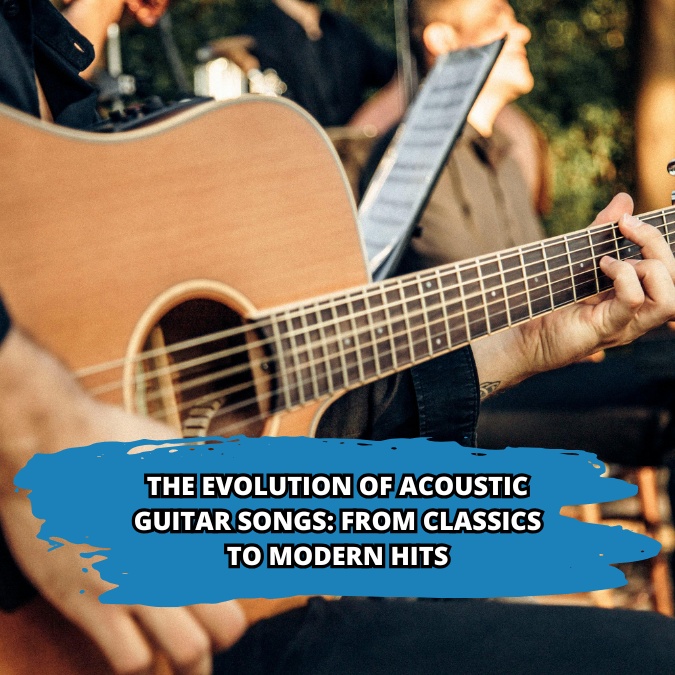The Evolution of Acoustic Guitar Songs: From Classics to Modern Hits

Introduction to Acoustic Guitar Songs
What Defines an Acoustic Guitar Song?
Acoustic guitar songs are characterized by their use of acoustic guitars as the primary instrument, often creating a raw, organic sound. These songs typically emphasize melody and lyrics, offering a more intimate listening experience compared to their electric counterparts. The lack of amplification allows the guitar’s natural tones to shine, making these songs timeless and versatile across genres. From folk to rock to contemporary pop, acoustic guitar songs remain a cornerstone of musical expression.
The Timeless Appeal of Acoustic Music
The enduring popularity of acoustic guitar songs lies in their ability to connect with listeners on a personal level. Their simplicity and authenticity often evoke deep emotions, making them ideal for storytelling. Unlike heavily produced tracks, acoustic songs allow artists to showcase their raw vocal and instrumental skills. This stripped-down quality ensures that these songs resonate across generations and remain relevant in ever-changing musical landscapes.
Acoustic Guitar in the Early 20th Century
Folk Music and the Acoustic Revolution
In the early 20th century, folk music played a significant role in popularizing acoustic guitar songs. Artists like Woody Guthrie used the guitar to deliver poignant social messages, establishing the instrument as a tool for change. Folk acoustic songs were often simple yet powerful, focusing on storytelling and shared human experiences. This era laid the groundwork for acoustic guitar’s role in shaping modern music genres.
Key Artists and Songs of the Era
Artists such as Lead Belly and Mississippi John Hurt were pioneers of acoustic music, blending blues and folk traditions. Their songs, like “Goodnight Irene” and “Candy Man,” showcased the versatility of the acoustic guitar. These musicians influenced generations of artists, demonstrating how acoustic songs could transcend cultural and geographical boundaries. Their legacy is still celebrated today in modern acoustic guitar performances.
The Rise of Acoustic Rock in the 1960s and 1970s
The Influence of Bob Dylan and Simon & Garfunkel
Bob Dylan revolutionized acoustic guitar songs by combining folk traditions with lyrical depth. Tracks like “Blowin’ in the Wind” and “The Times They Are A-Changin’” became anthems of social movements. Simon & Garfunkel added a harmonic and melodic sophistication to acoustic music with songs like “The Sound of Silence.” These artists elevated the acoustic guitar from a folk staple to a mainstream instrument.
Iconic Acoustic Tracks of the Era
The 1960s and 1970s produced some of the most iconic acoustic guitar songs ever written. Tracks like “Blackbird” by The Beatles and “Stairway to Heaven” by Led Zeppelin demonstrated the guitar’s capacity for both simplicity and complexity. These songs remain essential in any guitarist’s repertoire and continue to inspire musicians worldwide. They also solidified the acoustic guitar’s role in shaping rock music.
Acoustic Ballads and the Soft Rock Movement
How Acoustic Guitar Defined Emotional Storytelling
Acoustic ballads became a hallmark of the soft rock movement, emphasizing personal narratives and emotional resonance. Artists like James Taylor and Carole King used the acoustic guitar to craft introspective songs that connected deeply with audiences. Tracks such as “Fire and Rain” showcased the guitar’s ability to support heartfelt storytelling. These songs often relied on fingerpicking techniques to enhance their emotional impact.
Memorable Soft Rock Acoustic Hits
The soft rock era produced numerous acoustic guitar songs that have stood the test of time. Songs like “Hotel California” by the Eagles and “Dust in the Wind” by Kansas remain timeless classics. These tracks combined technical proficiency with lyrical poignancy, making them staples of acoustic guitar performance. They also introduced innovative guitar arrangements that continue to influence musicians today.
The Acoustic Revival of the 1990s
MTV Unplugged and Its Cultural Impact
The 1990s saw a resurgence of acoustic guitar songs thanks to MTV Unplugged. This series stripped down performances from artists like Nirvana, Eric Clapton, and Pearl Jam, showcasing their raw talent. Clapton’s “Tears in Heaven” became a defining moment for acoustic guitar music, blending emotional depth with technical skill. MTV Unplugged reintroduced acoustic music to a younger generation, cementing its relevance.
Best Acoustic Performances from the Era
The acoustic revival of the 1990s produced unforgettable performances. Nirvana’s rendition of “About a Girl” highlighted the raw energy of unplugged grunge. Eric Clapton’s unplugged version of “Layla” showcased the versatility of acoustic arrangements. These performances reminded audiences of the timeless appeal of acoustic guitar songs and inspired countless musicians to explore the instrument’s potential.
Acoustic Guitar in Contemporary Music
Blending Acoustic and Digital Elements
Modern acoustic guitar songs often blend traditional acoustic sounds with digital production techniques. Artists like Ed Sheeran and John Mayer have mastered this fusion, creating songs that appeal to diverse audiences. Tracks like “Thinking Out Loud” feature acoustic guitar as the foundation while incorporating subtle electronic elements. This hybrid approach ensures acoustic music remains fresh and innovative.
Popular Modern Acoustic Guitar Songs
Contemporary music continues to produce standout acoustic guitar songs. Tracks like “A Team” by Ed Sheeran and “Slow Dancing in a Burning Room” by John Mayer showcase the guitar’s enduring appeal. These songs blend emotional storytelling with intricate guitar work, appealing to both traditionalists and modern listeners. They highlight the continued relevance of acoustic guitar in today’s music scene.
The Global Influence of Acoustic Guitar Songs
Acoustic Styles from Different Cultures
Acoustic guitar songs are a global phenomenon, with each culture bringing its unique flavor to the instrument. Flamenco in Spain uses intricate fingerpicking and rhythmic strumming to create passionate melodies. In Brazil, Bossa Nova incorporates syncopated rhythms and soft harmonies, as heard in “The Girl from Ipanema.” In India, the acoustic guitar is often fused with traditional ragas, showcasing its versatility across cultural boundaries.
Cross-Genre Experimentations with Acoustic Guitar
Artists worldwide have experimented with combining acoustic guitar with other genres, creating innovative sounds. In jazz, artists like Pat Metheny blend acoustic techniques with improvisational elements. Pop and electronic genres often include acoustic elements to add warmth and depth, as seen in tracks by artists like Coldplay. These cross-genre efforts demonstrate the adaptability of acoustic guitar songs in various musical landscapes.
Learning from the Masters: Acoustic Guitar Lessons from Iconic Songs
Techniques to Learn from Classic Tracks
Classic acoustic guitar songs offer valuable lessons in technique and composition. Tracks like “Blackbird” by The Beatles teach intricate fingerpicking patterns that enhance dexterity. Songs such as “Wish You Were Here” by Pink Floyd highlight effective chord progressions and rhythm techniques. By studying these tracks, guitarists can build a solid foundation for mastering the instrument.
How Modern Songs Can Teach Versatility
Modern acoustic guitar songs provide insights into blending tradition with innovation. Ed Sheeran’s “Perfect” demonstrates how looping and layering can enrich acoustic performances. John Mayer’s “Gravity” showcases the use of dynamics and phrasing to create an emotive experience. These songs illustrate how acoustic guitar can adapt to contemporary music trends while maintaining its timeless essence.
Conclusion: Why Acoustic Guitar Songs Will Always Be Timeless
The Enduring Simplicity and Emotional Connection
The simplicity of acoustic guitar songs is one of their greatest strengths, making them universally accessible and emotionally powerful. Without the distractions of heavy production or electronic effects, these songs rely on melody, lyrics, and raw instrumental skill. This minimalism allows listeners to focus on the emotions conveyed, creating a deep connection between the music and the audience. Acoustic guitar songs often evoke feelings of nostalgia, love, and introspection, ensuring their timeless appeal.
Looking Ahead: The Future of Acoustic Guitar Songs
As music continues to evolve, acoustic guitar songs remain a vital part of the landscape, blending tradition with innovation. Emerging artists are experimenting with new techniques, such as using acoustic guitars with percussive elements or integrating them into digital soundscapes. The rise of platforms like YouTube and TikTok has also introduced a new generation to the beauty of acoustic guitar music. This ensures that the legacy of acoustic guitar songs will endure for decades to come.
FAQ
Q: What are some easy acoustic guitar songs for beginners?
A: Easy acoustic guitar songs for beginners include classics like “Wonderwall” by Oasis, “Let It Be” by The Beatles, and “Horse with No Name” by America. These songs use simple chords and repetitive strumming patterns, making them ideal for practice.
Q: What is the most iconic acoustic guitar song of all time?
A: “Stairway to Heaven” by Led Zeppelin is often regarded as one of the most iconic acoustic guitar songs. Its intricate fingerpicking and dynamic progression have made it a must-learn for guitarists worldwide.
Q: How has the acoustic guitar influenced modern music?
A: The acoustic guitar has influenced modern music by providing a foundation for countless genres, from folk and rock to pop and country. Its versatility allows artists to explore various styles while maintaining an intimate, authentic sound.
Q: Can I learn acoustic guitar songs without prior musical experience?
A: Yes, many acoustic guitar songs are beginner-friendly and can be learned without prior experience. Starting with simple chords and progressing gradually will help build confidence and skill.
Q: What genres of music commonly use acoustic guitar?
A: Acoustic guitar is prevalent in a variety of genres, including folk, country, rock, pop, jazz, and classical music. It is also a significant element in global genres like Flamenco, Bossa Nova, and traditional folk music. Its versatility allows it to be used across virtually all musical styles.





